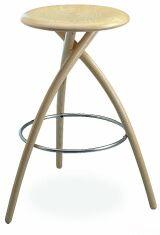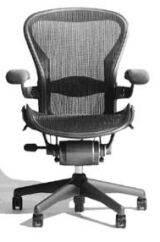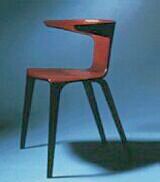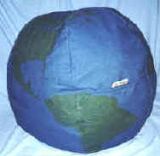The chair is the classic design icon, so here I've chosen twelve chairs to illustrate my basic principles of sustainable product design.
| This Deck Chair designed by Colin Reedy for MetaMorf uses the flexible nature of recycled plastic to provide comfort without need for padding. |
 |
| The Louis 20 chair by Philippe Starck is made from only aluminium and polypropylene, both over 99% pure,
and is held together with only five screws, making it very recyclable. |
 |
|
Architect Michael McDonough designed this bamboo chair to show
how grown materials can have as high a performance as metals or synthetics (bamboo has a slightly higher tensile strength than steel).
|
 |
|
Designers can substitute hazardous materials.
This cardboard chair by ReturDesign and the Rondine armchair by Totem Italia both avoid the
use of glues with their clever joint construction.
|
  |
| Trannon make all their furniture from British hardwood grown less than 50 miles from their factory, and they use only the thinnings -- narrow wood that is cleared to make way for bigger trees and which is usually wasted. This is an example of stewardship sourcing of materials. |
 |
| Stokke have designed their Tripp Trapp chair to grow with the child. This means that the same chair can be used for children from 0 to 15 years, greatly increasing the effective use or utility of the chair. |
 |
| Most chairs last a long time, but the longer they last, the less new chairs need to be made, and so the less pollution. This granite chair could
last a thousand years, so is exceptionally durable. |
 |
| Increasing the efficiency of materials and energy use means less environmental damage. The Aeron chair by Don Chadwick and Bill Stumpf for Herman Miller has eliminated the need for upholstery by having a trampolene-like seat and back. Its use of recycled aluminium also saves manufacturing energy.
|
 |
| Alberto Lievore designed his Rothko chair
to be made of Maderon, a moulded bio-material made from pulverized almond shell mixed with natural and synthetic resins. |
 |
| The Earthchair is supplied as an empty sack which the user stuffs with plastic bags. This interactive approach to waste helps communicate the environmental message to consumers. |
 |